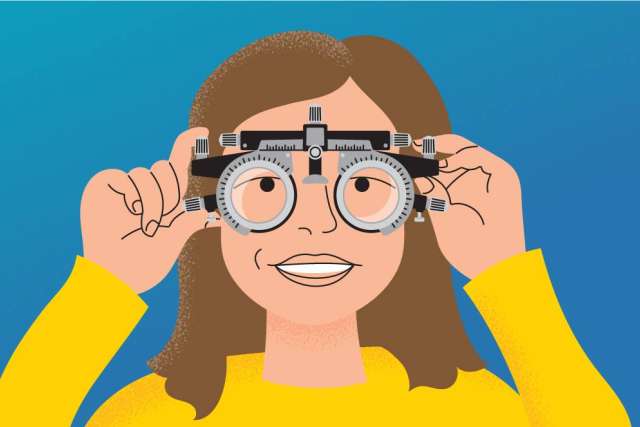Nearsightedness, or myopia, has gone up significantly among children, who have spent more time looking at small digital screens and less time playing outside, according to ophthalmologists at UCLA Medical Center. They also have seen more children with “dry eye” conditions because patients tend to blink less frequently when they are focusing on digital screens for long periods of time.
“It does look the rise in these problems is still mostly related to the lockdown, and to our habits of spending more time indoors looking at things up close,” said Dr. Stacy Pineles, M.D., a pediatric ophthalmologist with UCLA Health.
“We’re seeing more kids with myopia and dry eyes because of that,” she said.
Dr. Pineles and her colleague, Dr. Monica Khitri, M.D., also an ophthalmologist with UCLA Health, have some simple advice for parents on how to protect their children from developing nearsightedness. They recommend that parents encourage their youngsters to take frequent breaks from the digital screens of their phones, tablets, and computers, to prevent their eyes from locking in on close-up objects.
This already was good advice before the lockdown, Dr. Khitri said.
“The increase of nearsightedness was a trend even before the pandemic, with kids spending more and more time on their digital screens,” Dr. Khitri said. “Use of tablets and similar devices are just so much a part of normal schoolwork now, that there is no turning back at this point.”
She said recent studies have shown that kids now have a higher rate of nearsightedness than their parents’ generation.
"This has become our new normal,” Dr. Khitri said.
The "20-20-20" rule
Dr. Khitri and Dr. Pineles urge parents to get their children to follow the “20-20-20” rule recommended by the American Academy of Ophthalmology. With this practice, anyone using a phone, tablet or computer should take a break every 20 minutes, and look at an object that is at least 20 feet away for at least 20 seconds.
Looking at far away objects allows the eye to relax its ciliary muscle, which is used, or overused, to help the eye focus on near objects, according to the Academy.
“So basically, that means you should look out the window every 20 minutes,” Dr. Pineles said with a chuckle. “Just look at something that is kind of far away for 20 seconds, before you go back to work at your screen. If you set a timer for every 20 minutes, it is really easy to do.”
Since the electronic devices are not going away any time soon, Dr. Pineles and Dr. Khitri typically do not make a point of asking parents to limit their children's screen times. Many people, including children, got used to using their electronic devices more during the pandemic, and that trend is not reversing.
Instead, the ophthalmologists are emphasizing the importance and effectiveness of following the 20-20-20 rule to prevent further eye damage, as well as encouraging some regular time outside to better experience the world in three dimensions.
Prevention is the key, the doctors say, since nearsightedness, is not reversible without surgery
“Once you become nearsighted, it doesn’t go away,” Dr. Pineles said. “So people who became nearsighted during the pandemic are still more nearsighted now, even if they change their habits.”
But she said, people can prevent further damage to their eyes by using the 20-20-20 rule, which will become increasingly important as our lives become more digital.
“My overall impression is that even thought things are kind of back to ‘normal’ now, people have created new habits, and those will continue,” Dr. Pineles said.
For instance, she said, maybe some parents allowed their children to use a tablet more when they were stuck in the house, and now that has become ingrained in their lifestyle.
Checking in
Besides the habit of taking breaks, Dr. Pineles also recommends that parents take advantage of the summer months and make sure their kids play outside for at least an hour a day.
Another habit neglected during the pandemic was regular doctor visits. In addition to a regular check-up, Dr. Khitri said parents should make sure their children get an eye screening exam as part of their well child checks at least once a year, to see how their vision is progressing.
She added that parents also should be on the lookout for any signs of their children having difficulty with their vision, such as squinting or moving closer to the TV. In addition, it’s important to ask children if they’re having problems with their vision at school.
“It is always a good idea for parents to check in with their children now and then, and maybe ask them if they are having any trouble seeing the teacher’s board at school,” Dr. Khitri said.
Learn more about pediatric ophthalmology at the Stein Eye Institute at UCLA Health and make an appointment.
Tina Daunt is the author of this article.
Related:
What are the back-to-school vaccines California kids need?
Back-to-school: Threats of shootings, COVID-19 add to mental health challenges
Back to school: How much should parents worry about long COVID in kids?



